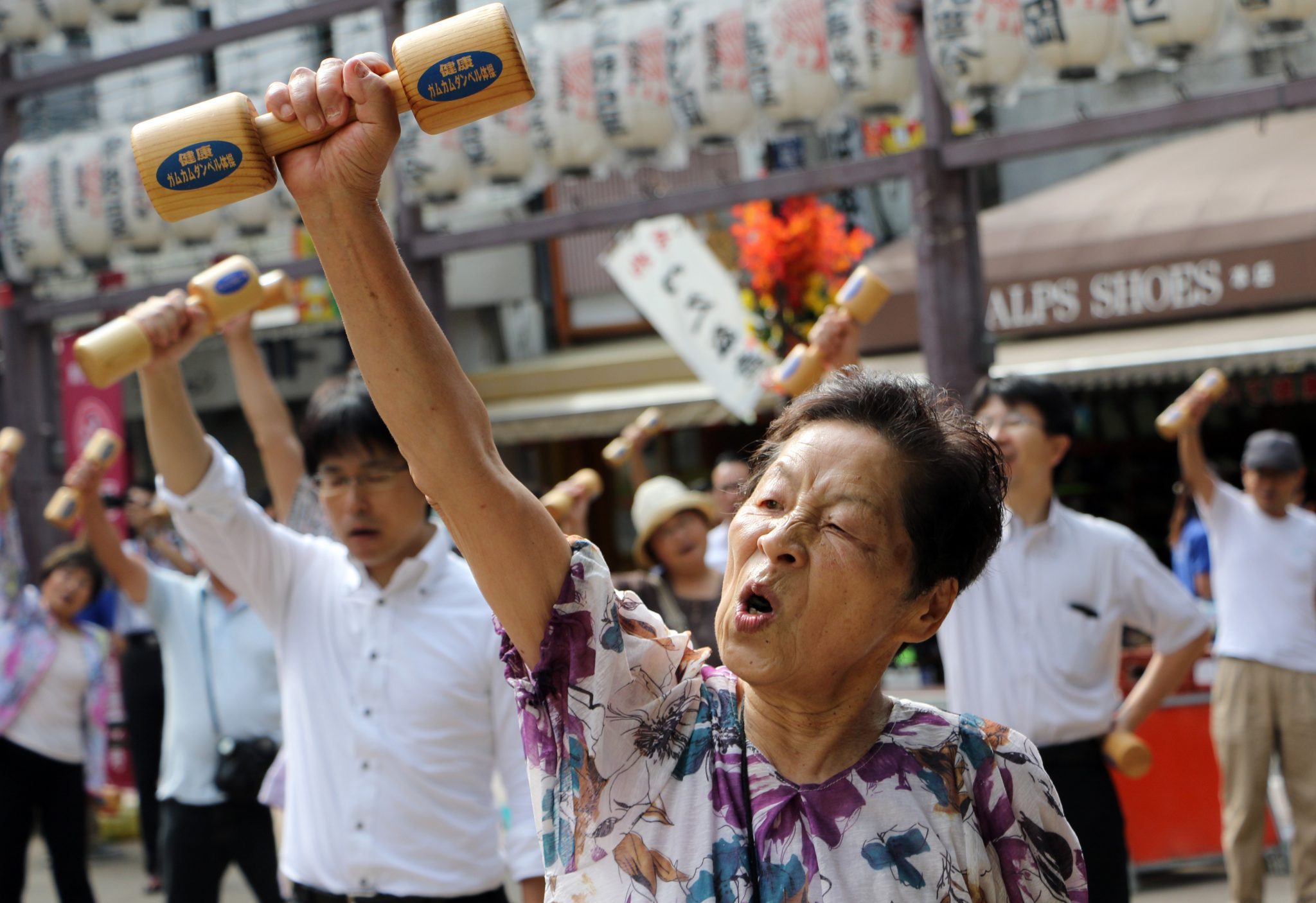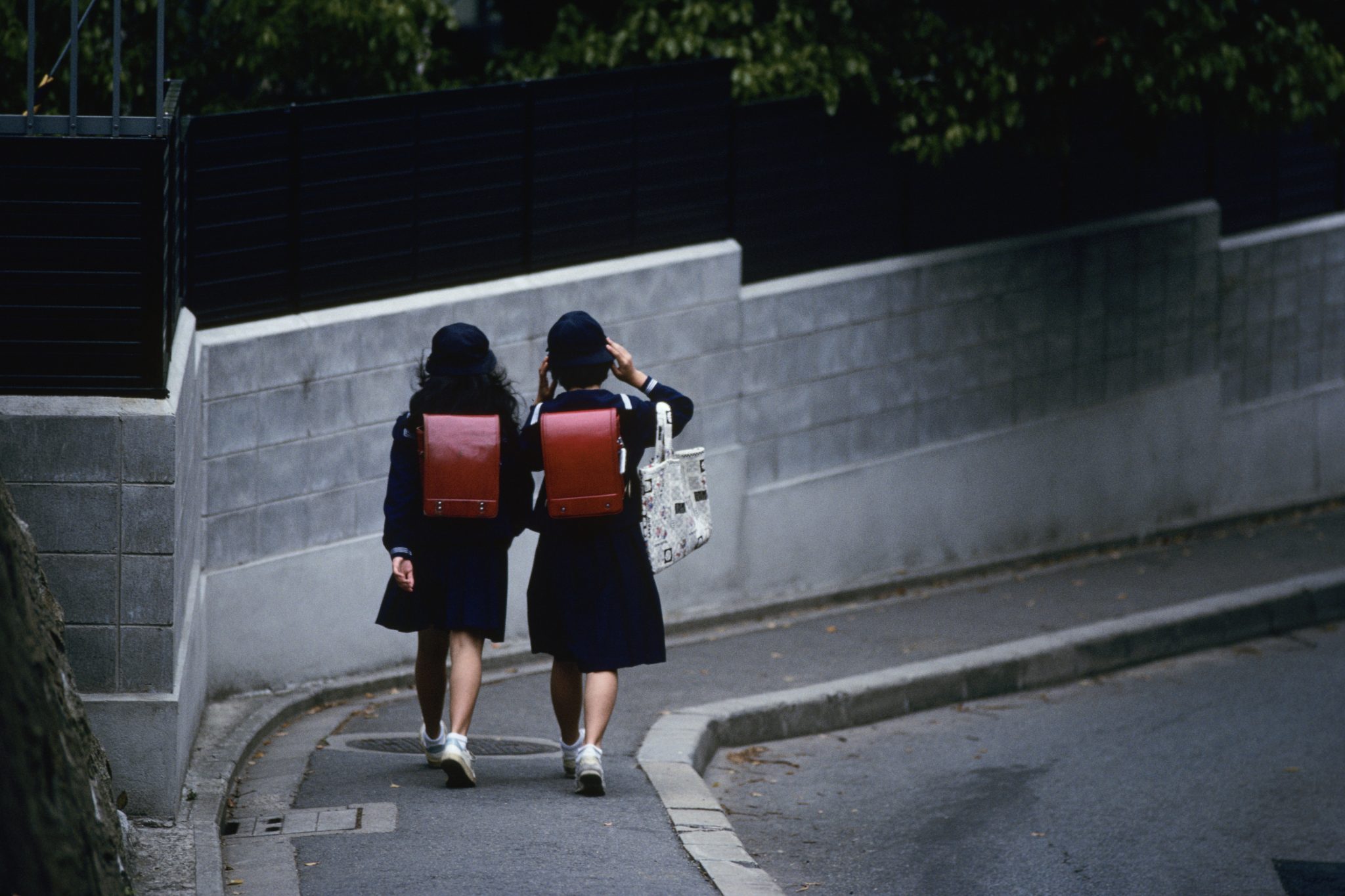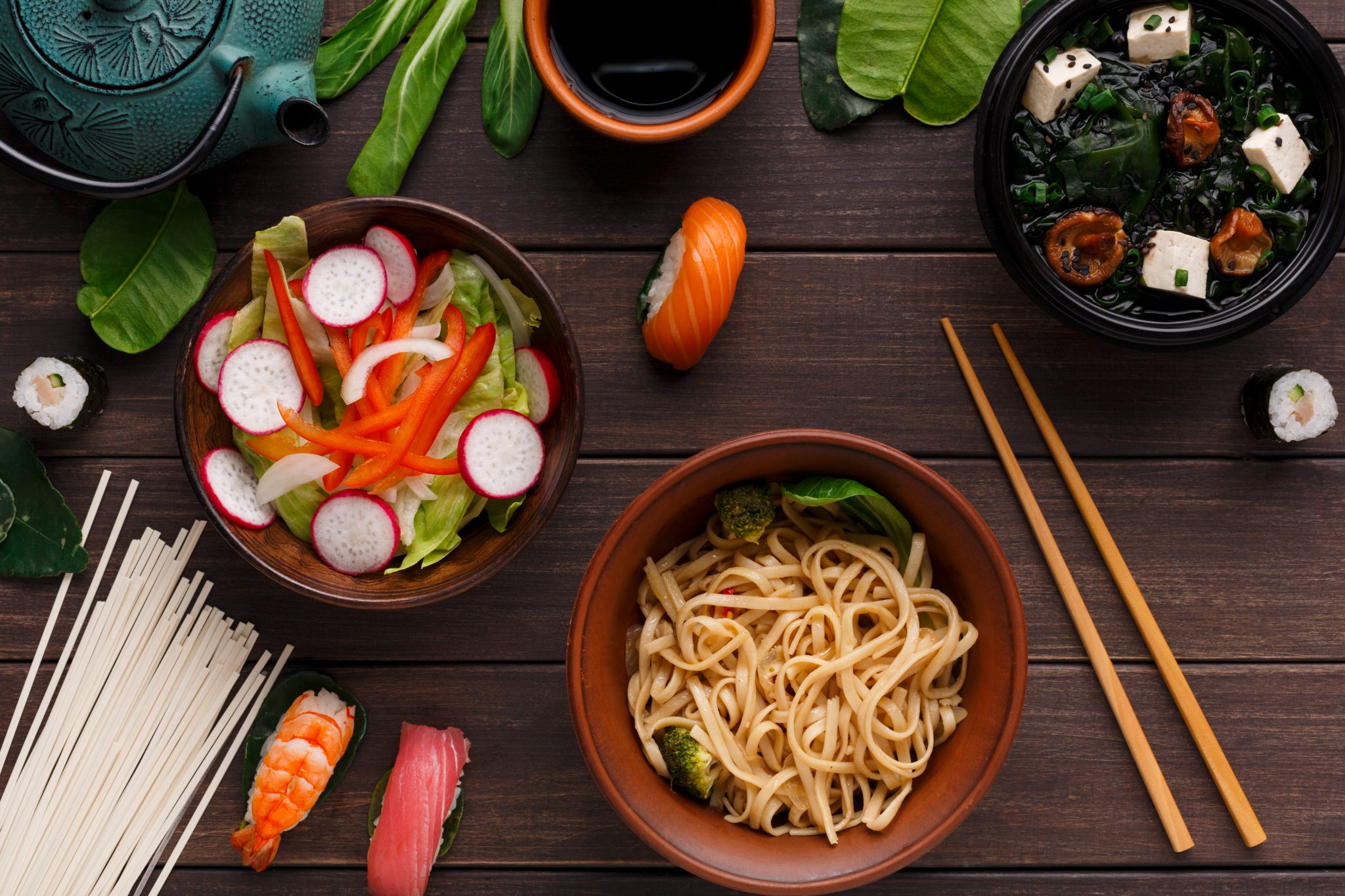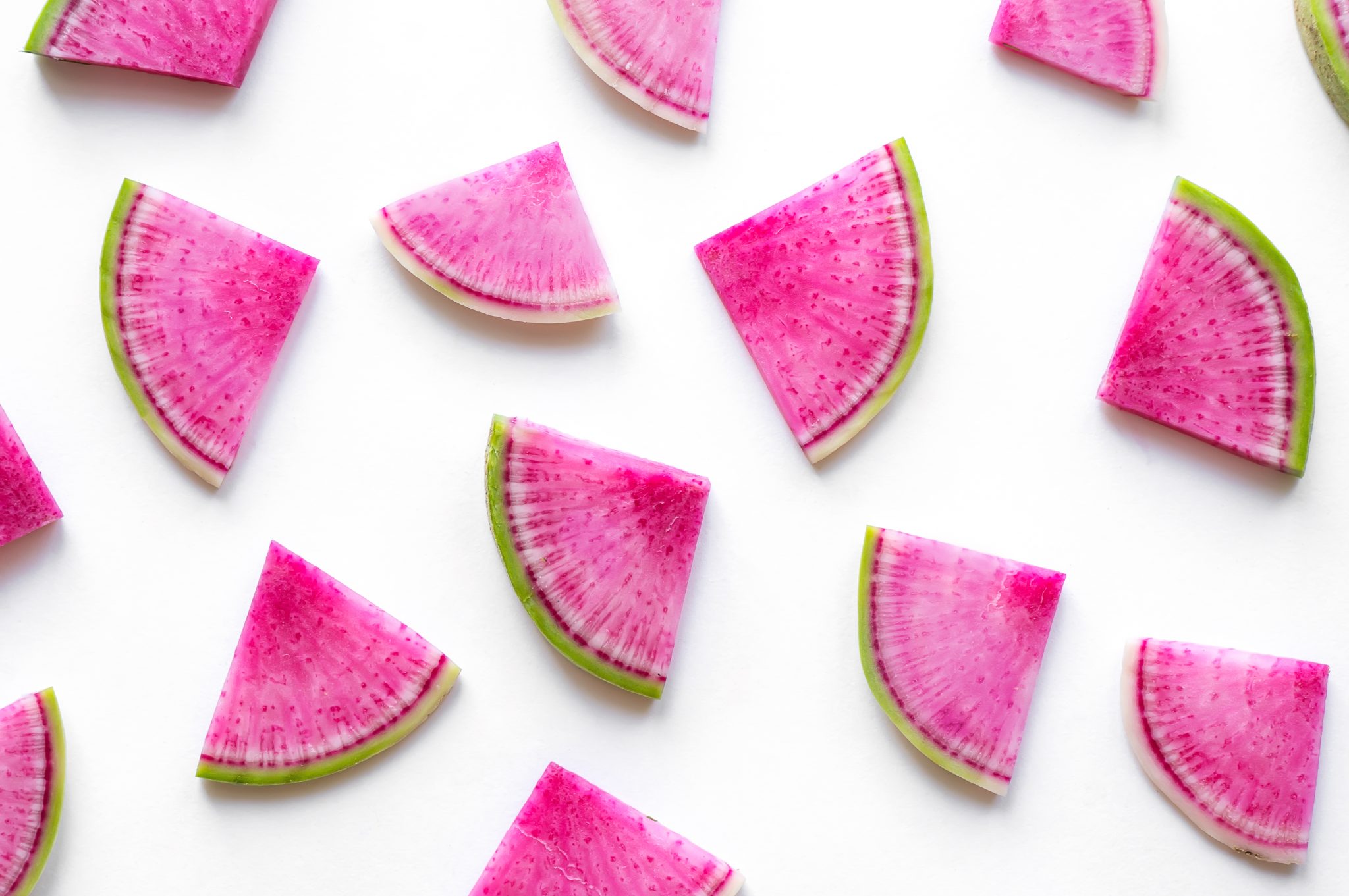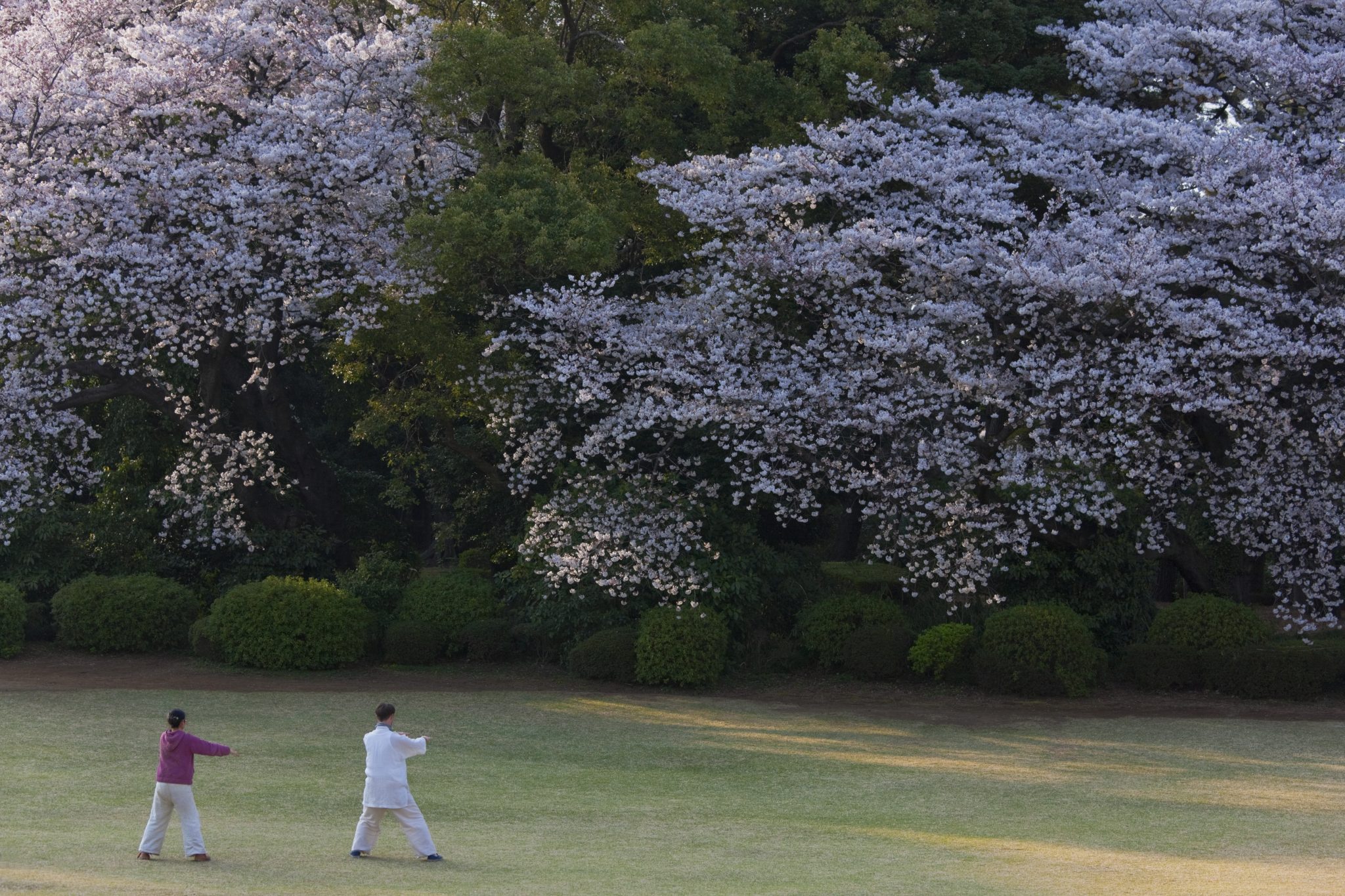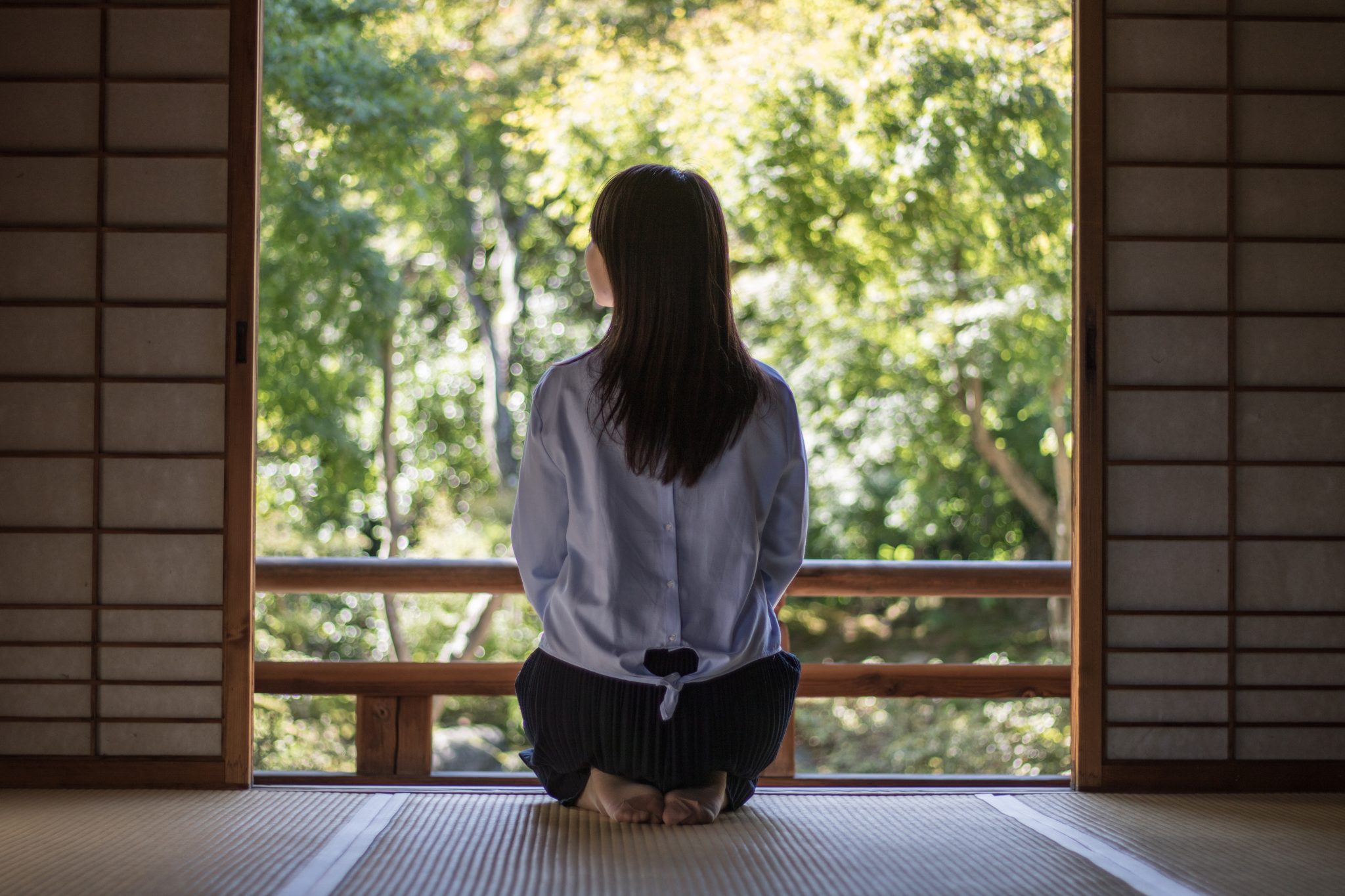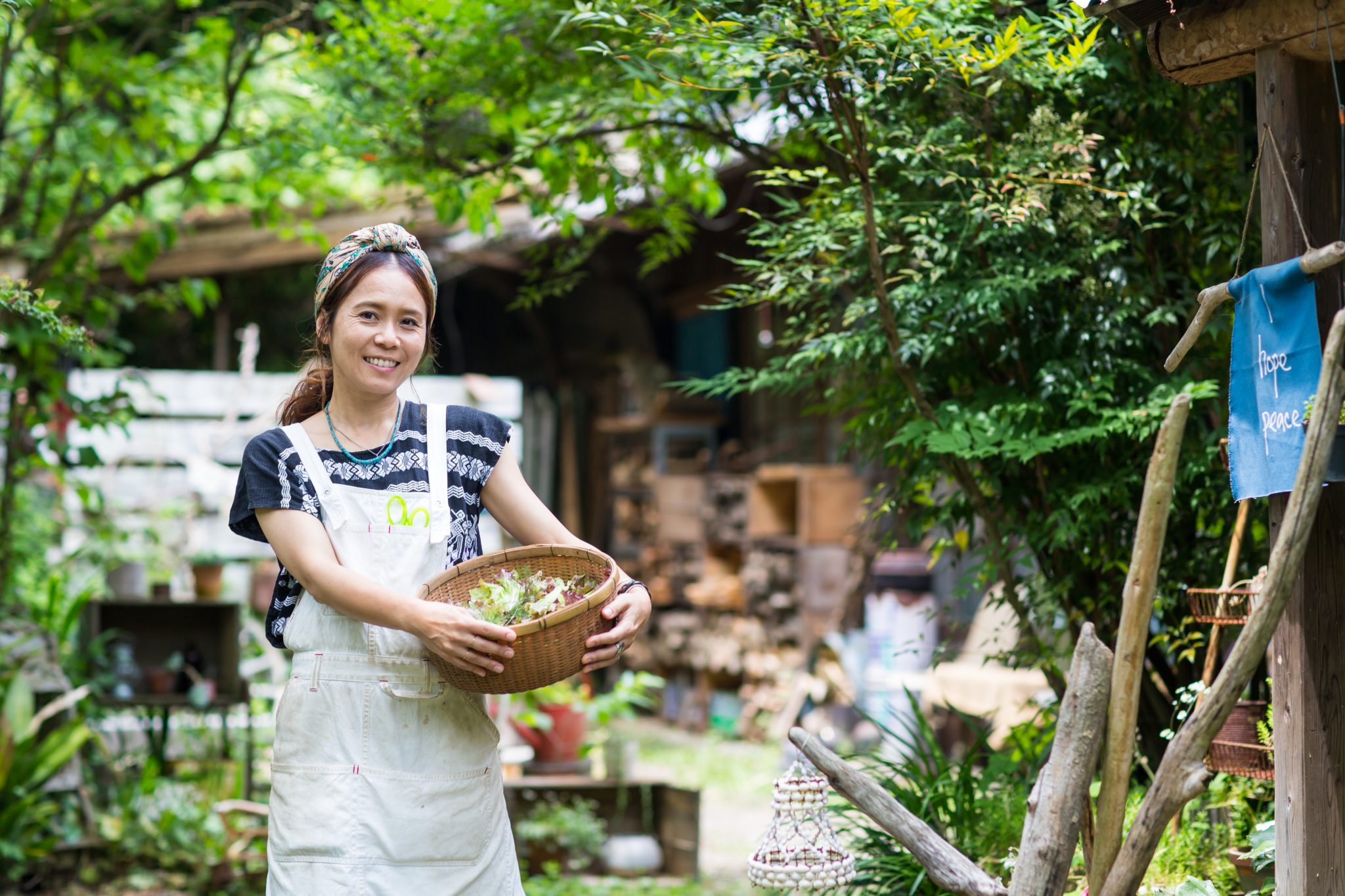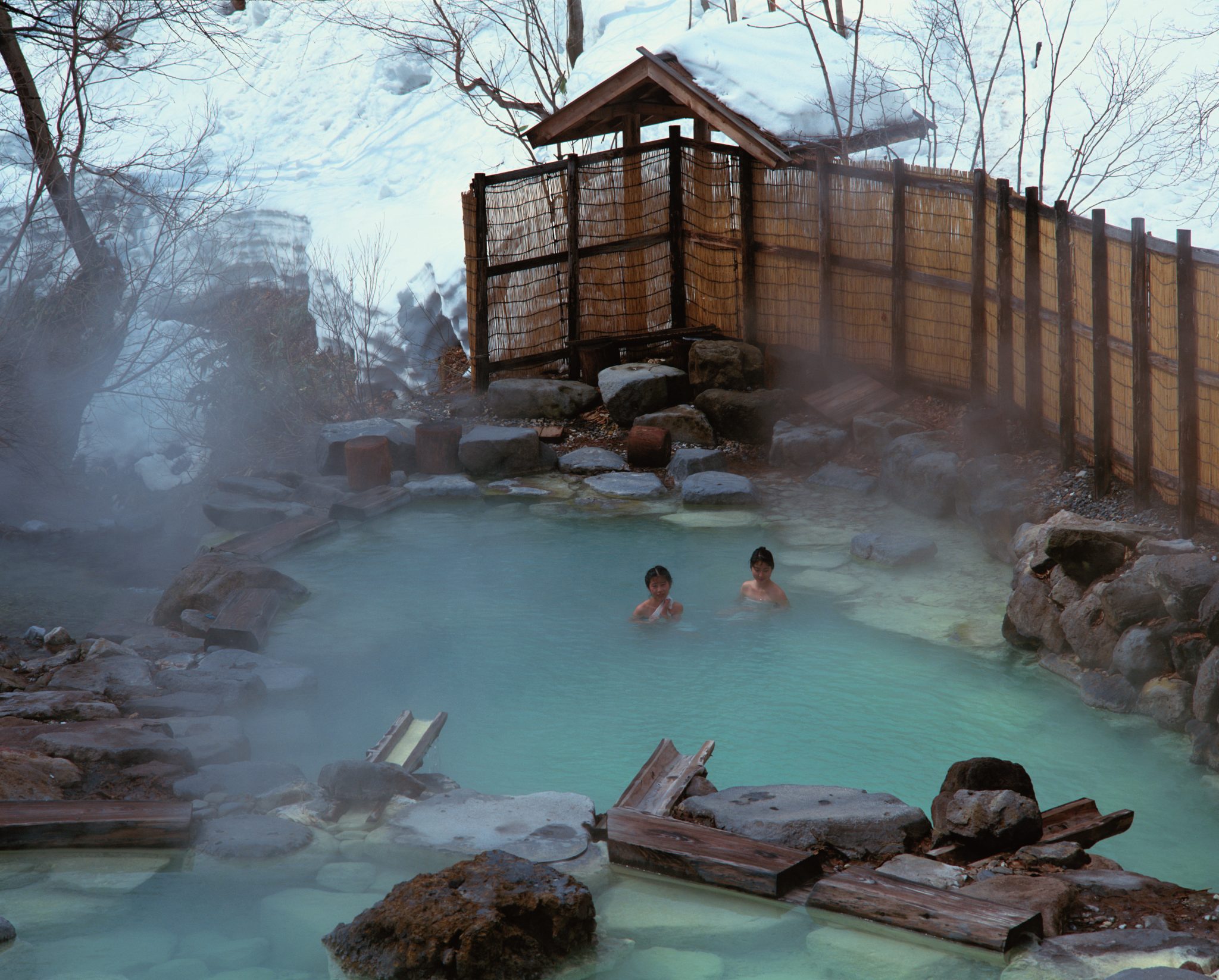
These Japanese beauty and wellness tips could be the secret to a longer life
10/08/2019Japan has the highest numberof centenarian women in theworld, while life expectancy inthe UK has stalled. So what’stheir secret? Stylist investigates.
Let’s face it, we all want to live a long and healthy life. Cue splashing out a small fortune on potions and supplements that promise to keep us at optimal wellbeing for longer. But more than 5,000 miles away, citizens in Japan may have discovered the key to longevity – and there isn’t an ‘anti-ageing’ product in sight.
In July 2018, Japanese woman Chiyo Miyako, the world’s oldest person, passed away aged 117. The next oldest woman, Kane Tanaka, aged 115, is also from Japan. Indeed, living beyond your 100th year isn’t that uncommon in the country, unlike here, where it warrants a message from the Queen.
In fact, last year, the Japanese Health Ministry revealed that the country had set a new world record for people over 100 years old – a staggering 69,785, of which 88% are women. The country also has a designated public holiday to celebrate the elderly. On Respect for the Aged Day (the third Monday of every September), the government presents a commemorative sake cup to those who have turned 100 in the past year. When records began in 1963, there were just 153 centenarians in Japan. Three years ago, the sterling silver cup was replaced by a silver-plated version to reduce costs.
Japanese citizens exercising in Tokyo to celebrate Japan’s Respect for the Aged Day in 2015
In the UK, it’s a completely different story. The Office for National Statistics (ONS) found that improvement in UK life expectancy has slowed down, particularly for women. It dropped by 90% from 12.9 weeks per year from 2006 to 2011 to 1.2 weeks from 2011 to 2012 – the biggest reduction of the 20 countries it studied. Meanwhile, Japan has the world’s highest life expectancy for women at 87 years – more than four years higher than the 82.9 years for women in the UK. It’s clear we’re getting it wrong somewhere – but where?
Dan Buettner, longevity expert and author of The Blue Zones Of Happiness, says, “Modern Western societies have set up most of our communities so that it’s easy to be sedentary – sitting in our cars and on our couches – and to fill up on cheap, high-calorie foods. We’re working too much, eating too much and not moving enough.”
But there’s more to blame than binge-watching The Good Place. While there are obvious diet and exercise factors, day-to-day socialising and life philosophies in Japan also play a huge part. In the quest for ultimate wellness, we set out to discover the tips that could increase your life expectancy.
Create a ‘moai’
Moais offer support to each other throughout life
In much of Japan, there’s a heavy emphasis on community. In fact, in Okinawa, an island at the southern end of Japan known as “land of the immortals” and home to more than 1,000 centenarians, people set up friendship groups known as ‘moai’. “The term means ‘meeting for a common purpose’ and originated as a way for villagers to support each other in times of need,” explains Buettner. Parents team up and cluster their children into groups of five to go through life together, sharing their fortunes and woes.
Dr Ruhul Amin, of Harley Street Emporium and co-founder of the Rejuvence Clinic, explains, “Social isolation is associated with increased blood pressure, higher cholesterol levels, depression and Alzheimer’s disease and also decreases our cognitive abilities. Plus, studies have shown social isolation resulted in a 50% increase in premature death.” All the more reason to arrange a gathering at that new winter pop-up everyone is talking about.
Find your purpose
The sun setting over Okinawa, Japan
A popular philosophy in Japan is that of ‘ikigai’, which roughly translates as “the reason you get up in the morning”. Yoga teacher Mariko Lavender-Jones, 49, who grew up in Tokyo and now splits her time between London and the Cotswolds, says, “Ikigai isn’t the type of thing you’re taught at school. You just grew up with it.” By focusing on different aspects of your life, from work and family to love and friendships, you get a strong sense of purpose to keep going in life.
Like Denmark’s hygge before it, the concept of ikigai has become hugely popular: Amazon is booming with books like Ikigai: Giving Every Day Meaning And Joy by Yukari Mitsuhashi, Ikigai: Discover Your Reason For Being by Justyn Barnes, and Ikigai & Other Japanese Words To Live By by Dr Mari Fujimoto and David Buchler (out 13 December) to help people identify their purpose.
Buettner says that focusing on your purpose can add up to seven good years to your life. “Science has linked having a purposeful life with longer life expectancy, better sleep and lower rates of chronic illness. One of the most dangerous years of your life is the year you retire because you experience a sudden lack of purpose.” And here we were, counting down the days until we don’t have to deal with our commute…
Take timeto eat
The Japanese prefer to eat with smaller bowls
Hands up, who often eats dinner on the sofa while scrolling through Instagram Stories? If this sounds familiar, you aren’t paying attention to what you’re eating and, as a result, not recognising when you’re full. In Japan, families concentrate on mealtimes by sitting on the floor and eating together. They also follow an old adage, ‘hara, hachi, bu’, which translates to ‘eat until you are eight parts full’. This reminds people to stop eating when their stomachs are 80% full. Dr Jenna Macciochi, a lecturer in immunology at the University of Sussex, explains, “The gut and the process of digestion itself is an inflammatory stress on the body and inflammation is the key driver of ageing. So, the more you eat, the larger the inflammatory toll your body has to deal with.” It usually takes the brain half an hour to recognise when you’re satisfied after a meal, so stopping early helps.
While piling our Sunday roast high on one plate might be great for Instagram, the Japanese prefer to eat tapas-style by dividing their food on to lots of smaller plates. This, along with eating slower, helps them to achieve ‘hara, hachi, bu’. Beth Kempton, author of Wabi Sabi: Japanese Wisdom For A Perfectly Imperfect Life, says, “When I lived in Japan with a host family, they always provided many plates. So instead of having meat and two types of vegetables on a plate, each of those things would be on separate plates. This, along with using chopsticks, makes the eating process a lot slower.” Digestion starts in the mouth, so it’s important to take time to chew food properly. If food isn’t completely broken down by the digestive system, it may not be absorbed properly, adds Dr Macciochi.
Taste the rainbow
Colourful vegetables are a big part of Japanese diet
Sadly, the key to a longer life doesn’t lie in your weekend Deliveroo habit. A study by the British Medical Journal found that those who stuck closely to the traditional Japanese diet, which includes lots of grains, vegetables and soya as well as fermented foods such as miso, had a reduced risk of age-related health concerns like heart disease and strokes. Dr Macciochi explains, “As a fermented food, miso provides the gut with beneficial bacteria that help us to stay healthy, vibrant and happy; good gut health is known to be linked to our overall mental and physical wellness.” You know what to order the next time you’re at Itsu…
In Okinawa, the older generation eat a lot of goya (bitter melon) which has been shown to lower blood sugar and stimulate digestion. Soya, meanwhile, provides protein, lowers cholesterol and is also attributed to a longer life. Dr Macciochi says, “One particular type of fermented soya called ‘natto’ is a staple in their diet and is particularly rich in phytoestrogens, which make menopause symptoms milder. It’s also a good plant-based source of vitamin K, which improves the function of vitamin D to strengthen bones.” The type of oil you use also matters. “We have very simple food, with not much fat or oil added in. If we do use oil, it’s sesame oil or rapeseed oil,” says Lavender-Jones.
Get moving
Many elderly people in Japan do regular exercise
Understandably, as people get older, it’s difficult to keep up with exercise. Instead of focusing on intense bouts of physical activity, the elderly in Japan set up their lives so that they’re constantly moving. Kempton recalls speaking to 94-year-old Mieyo Kanie while writing her book: “She still cycles to the shops to get her shopping. She actually had a driving licence until last year. In fact, many people do tai chi in the park, and the elderly do lots of walking. If you walk up a mountain, you’ll see they’re amazingly fit.”
It’s easy to improve your health by incorporating more activity into your daily routine. Dr Andrew Thornber, chief medical officer at Now Patient, advises changing your position at your desk every 30 minutes or taking a short walk to loosen up your joints. He also recommends starting the day with stretching to keep blood flowing and taking the stairs over the lift.
Shun your chair
’Seiza’ position helps to spread your weight evenly when you sit
We know that a sedentary life can lead to bad health. Research by the academic journal Age And Ageing found that more than 2 million Brits will be living with four or more chronic illnesses within 20 years due to their sedentary lifestyles. But it’s not that the Japanese don’t sit down – they just do it differently. Families often sit on the floor in a kneeling position known as ‘seiza’, which involves resting on your shins and tucking your feet under your bottom, helping to spread out your weight more evenly
Osteopath Avni Trivedi explains, “Sitting on chairs is considered as great an epidemic as smoking was in previous decades. It’s been linked with back and neck pain, joint dysfunction, cardiovascular issues, hormonal problems, obesity and lethargy. Sitting on the floor helps to maintain strength and flexibility in the legs, hips and back and keeps up a level of fitness.” Try eating your next meal at a low table such as a coffee table in the seiza position, or use apps such as Headspace and Calm to practise meditation while sitting as the Japanese do.
Enjoy yourgarden
Gardening has been proven to benefit both physical and mental health
Most Japanese homes have gardens that residents frequently tend to. Buettner says, “We have found that natural movement and activity, from gardening or walking throughout the day, provides a wide range of motion, helps reduce stress and also forces people to spend time outdoors getting vitamin D.” Previous studies have also shown that women living in or near green areas live longer and have improved mental health. In fact, women who lived in the greenest areas had a 12% lower death rate than those who lived in the least green areas. And it isn’t just physical health – earlier this year, the Royal Horticultural Society teamed up with the NHS to promote the positive impact gardening can have on mental health. As well as being a good excuse to get fresh air, gardening can help build confidence and improve your concentration.
If you don’t have a garden of your own, the government runs a scheme that allows you to apply for an allotment near you. You can also extend your green fingers at a gardening workshop or event. Visit rhs.org.uk to see what’s on in your area.
Take a bath
Two people enjoying an onsen in Japan
In Japan, residents often visit an ‘onsen’. Part of the culture since the 8th century, onsen are natural hot springs hovering between 25°C and 42°C. Each is distinguished by the minerals that are found in the water – and each one provides different health benefits for body and mind.
As well as helping to relax muscles, a Japanese study by Ehime University in Matsuyama found that regular hot baths are linked to better heart and circulatory health. Those who took at least five hot baths every week had lower markers of atherosclerosis (a disease in which plaque builds up in your arteries). Researchers asked more than 800 elderly Japanese people about their bathing practices, with the definition of ‘hot’ water being over 41°C, and found that their baths lasted 12.4 minutes on average. Don’t mind us, just off to fill the tub and start looking forward to our letter from the Queen…
Photography by Karsten Thormaehlen/Images: Getty
Source: Read Full Article
